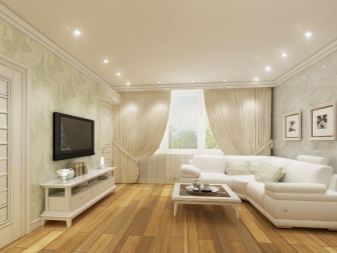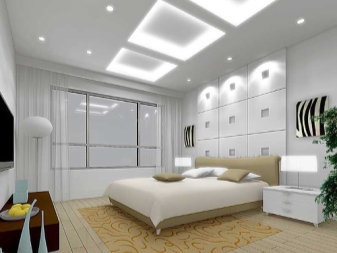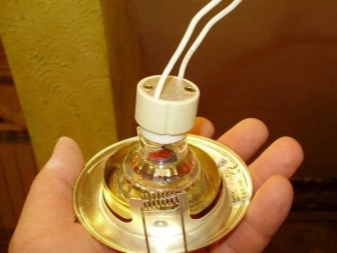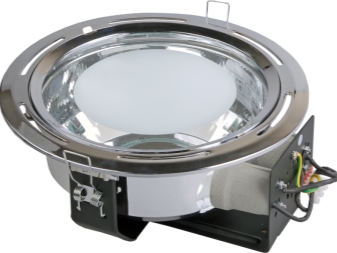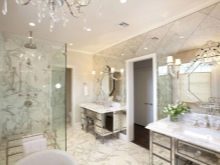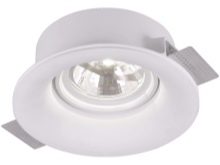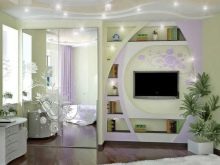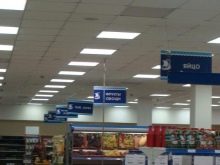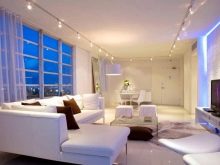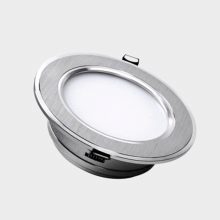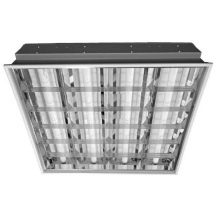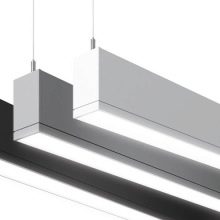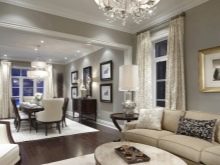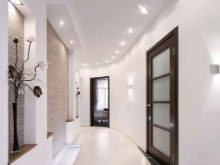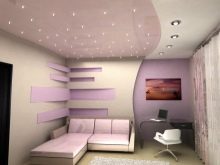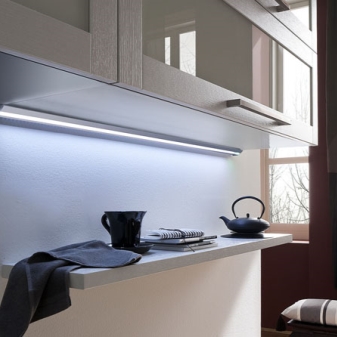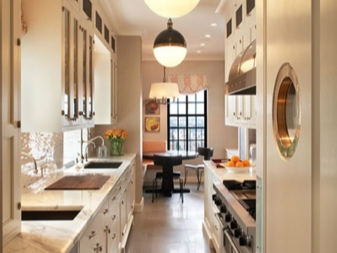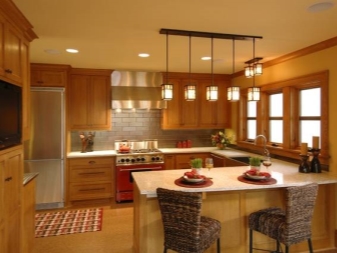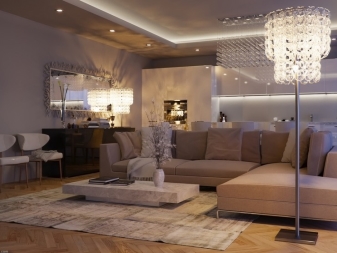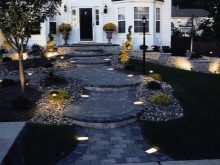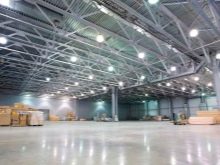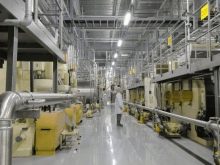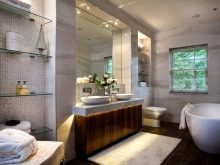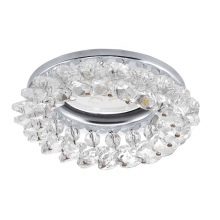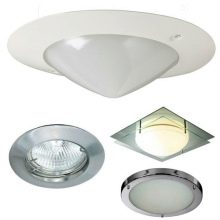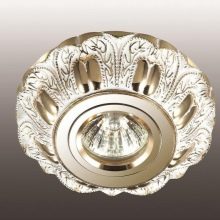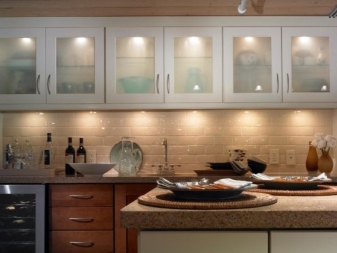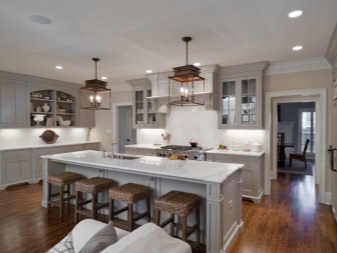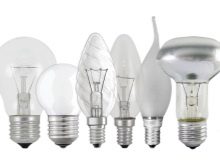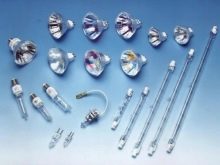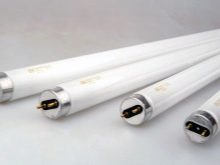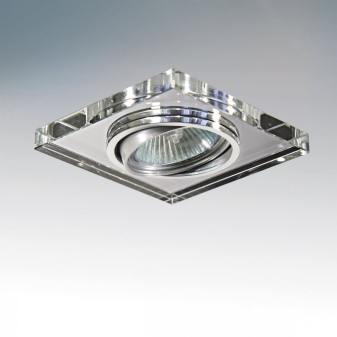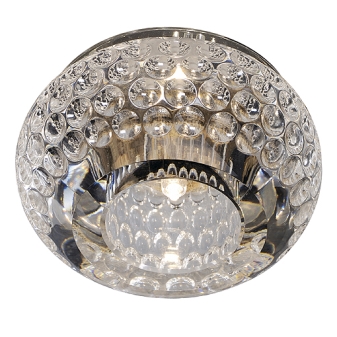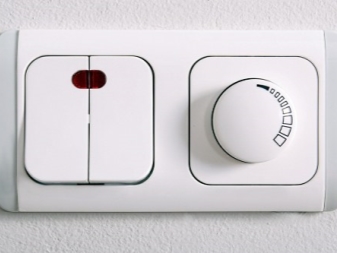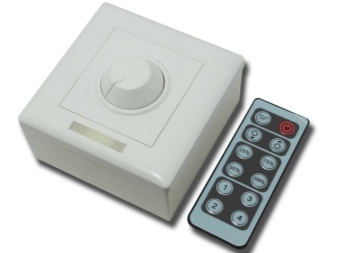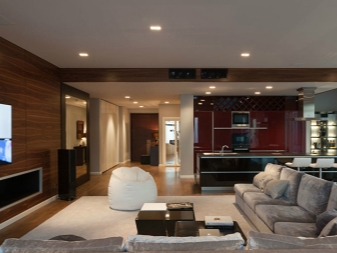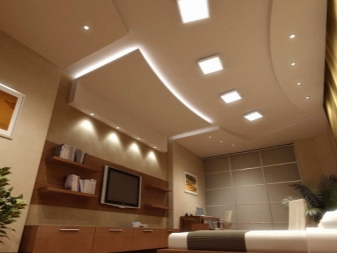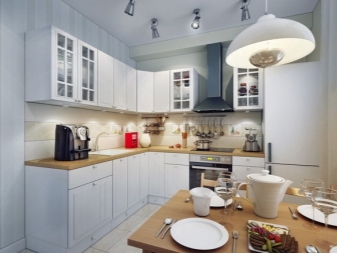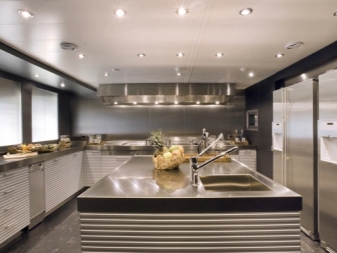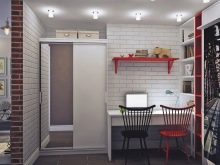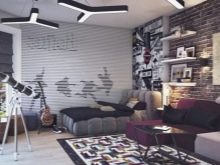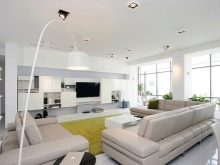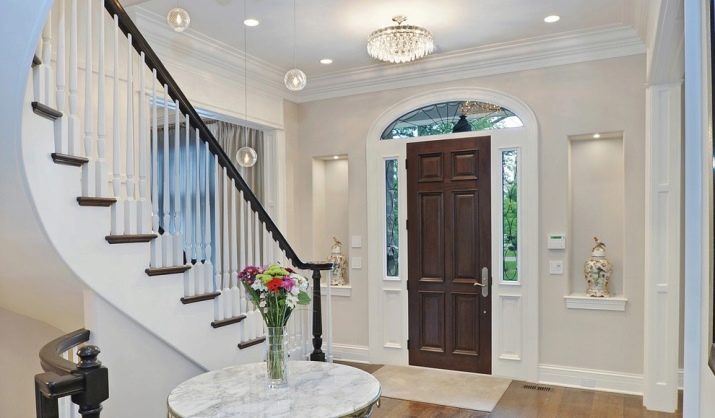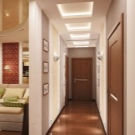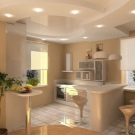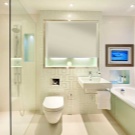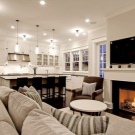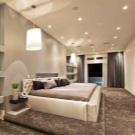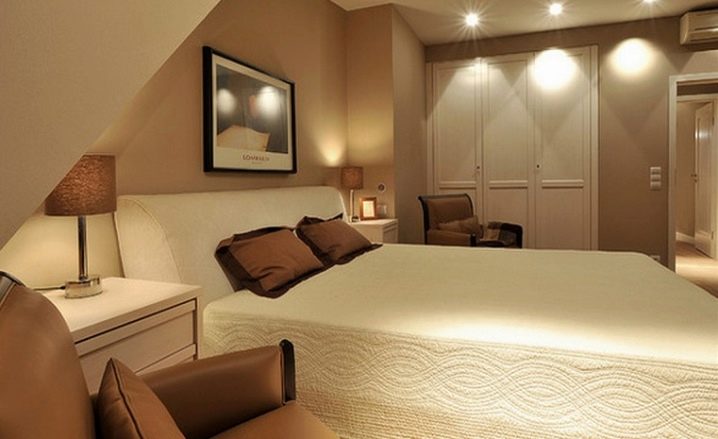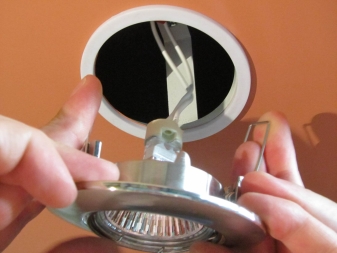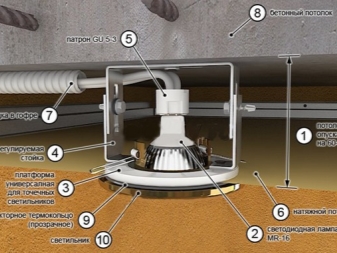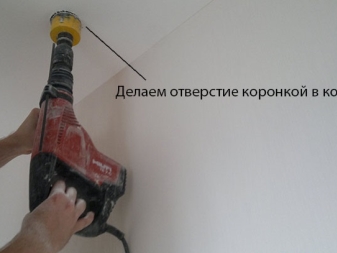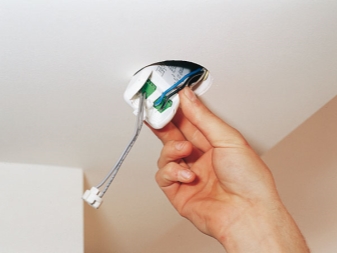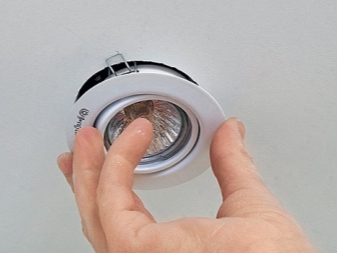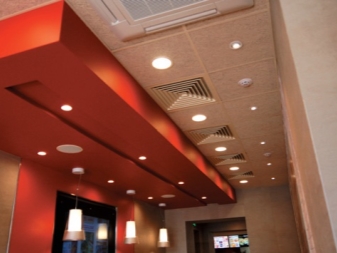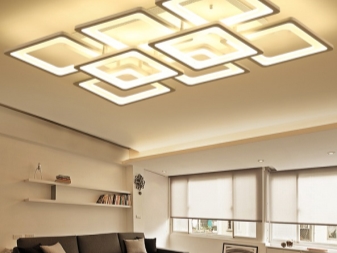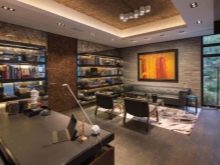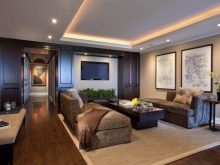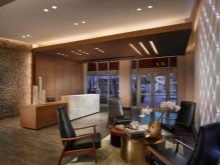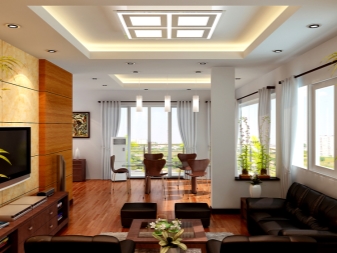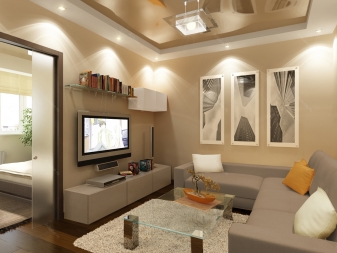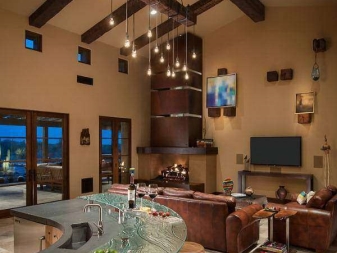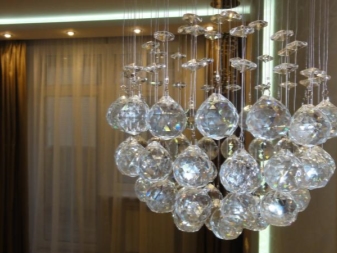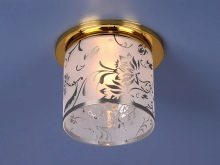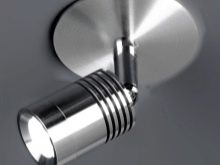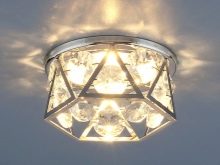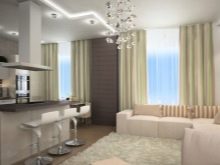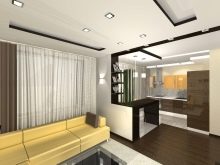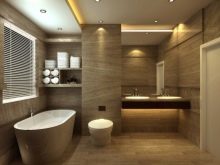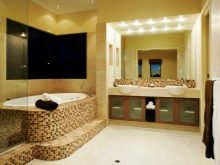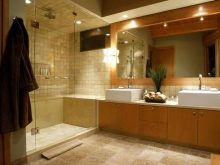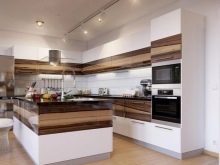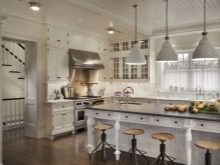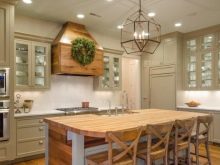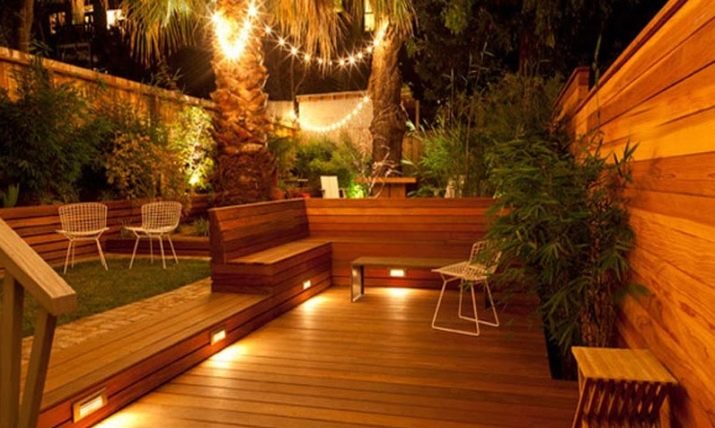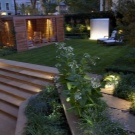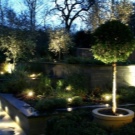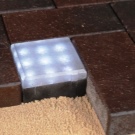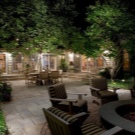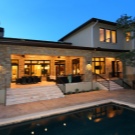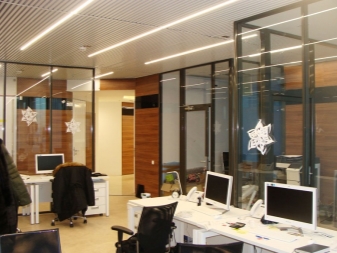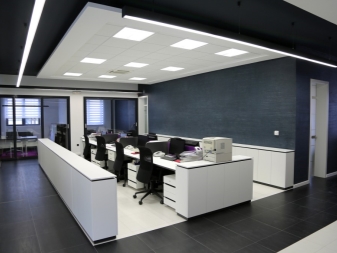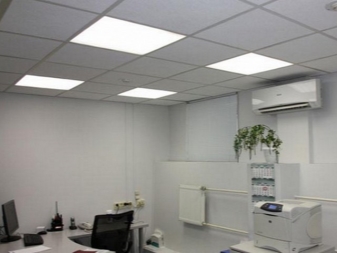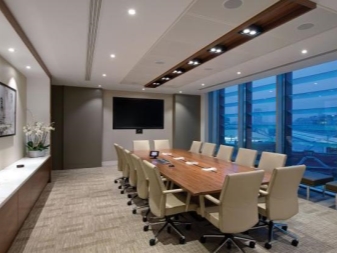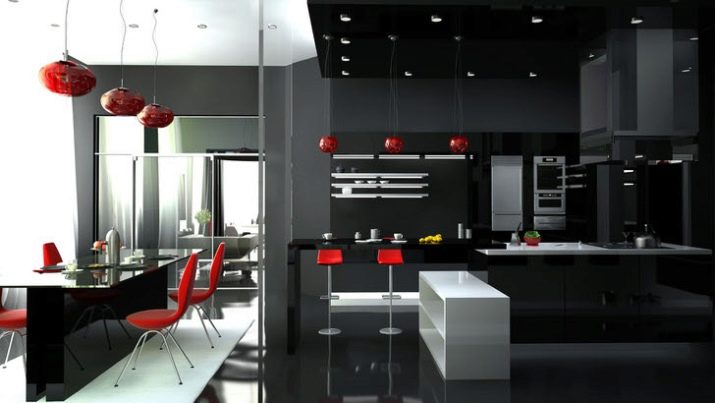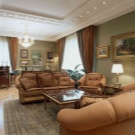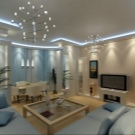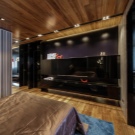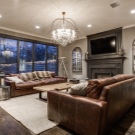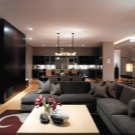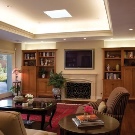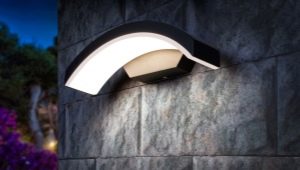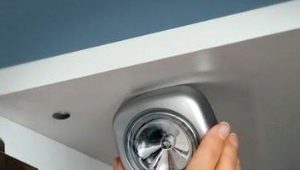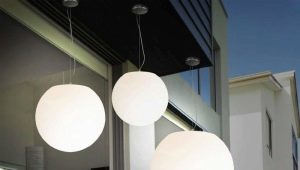Recessed ceiling lights
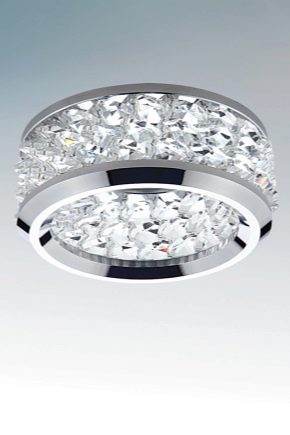
A wide range of interior items for various rooms offers a diverse range of lighting fixtures, in which a separate pedestal due to its characteristics is occupied by recessed ceiling lights.
Popularity among both buyers and manufacturers of ceiling lights have gained not just. A large role was played by the widespread distribution of suspended and suspended ceiling structures. The fading traditional interior designs and the prevalence of modern interior design have also had an impact.
Design feature
The fact is that suspended and stretch ceilings are not able to withstand the weight of the usual chandeliers and lamps, and also they do not easily fit into the style design of rooms, unlike ceiling lamps. Thus, the built-in lighting opens up a wide field of action for the realization of any design ideas without losing such qualities as ergonomics and practicality.
The design of recessed luminaires is very simple and consists of several elements:
- Lamp;
- Housing;
- Mount.
The second element, in turn, consists of a cartridge, for the manufacture of which materials such as porcelain or plastic with a high level of heat resistance, a light reflector and a diffuser are used.
The designs of ceiling lights are of several types:
- Dotted. The designs of spotlights are most often found in homes; they have earned a good reputation among consumers due to its democratic cost and ease of use. The constituent elements of point models include a reflector, a lamp and a housing. In this case, the most important advantage of them is that the body combines the properties of a decorative element and mounting.Turned lamps can be used both as the main lighting and as additional illumination.
- Suspended. Over time, these types of luminaires lose their popularity with users, as a prerequisite for their installation is a hard ceiling coating. Suspended construction has a square shape and is mounted in the ceiling. This type of luminaire can only be used as the main illumination due to the wide surface of the light element.
- Linear. Linear lighting sources allow you to create the longest rows of lamps, they have a fairly simple suspended structure and are widely used in industrial premises.
- Spots The design of the spot is significantly different from other types of ceiling lights. Translated from English, the name of these devices means "spot", and indeed, this type of lighting allows you to create a specific light area using a directional beam of light. The design of the spot is equipped with a frame with shades, equipped with a turning mechanism, a lamp and brackets in the form of brackets. Spot can be mounted on the ceiling or wall.
Recessed lighting may vary in shape and are:
- Round. Constructions of various sizes can be used both to illuminate large surfaces and to create narrowly directed light fluxes;
- Square or rectangulardesigned to illuminate various areas;
- Tape lamps used to illuminate individual elements and allow you to create fancy lighting forms.
Advantages to use
Embedded elements are ergonomic and versatile light sources. They are able to organize both full lighting of the space, and serve as elements of zoning, dividing the room into several zones. With the help of ceiling lights can also affect the visual perception, increasing or decreasing the area of the room in height, and width or length.
Due to the fabrication of structures from high-strength materials, owners of built-in lamps should not be afraid of damage either during installation or during use.
In addition to the standard installation of the structure in the ceiling, it is possible to install lamps in the walls or furniture, for example, in a modular wardrobe or desk.
The use of ceiling lights provides the ability to turn on each lighting element separately, which allows you to create a uniform illumination of any of the zones as desired by the user.
The main advantages of recessed luminaires include:
- Wide range of - from simple to elite models;
- Ergonomic design;
- Quality lighting due to the absence of an inert channel;
- Power saving;
- Diversity shapes and sizes;
- Simplicity designs.
Scope of application
Recessed lighting elements can be used in various premises. In addition, lamps are used for street lighting, office and industrial premises, as well as illuminating exhibits and architectural structures. But their main sphere of use is household.
Depending on the purpose of the premises, first of all, owners need to take care of the safety and durability of the luminaires during use.
Waterproof ceiling lights are suitable for lighting design bathrooms, showers and pools, sealed housing will save the design from splashes and fumes. Models with a reinforced hull are used in production workshops, etc. The variety of characteristics, geometric shapes and sizes, as well as the style of lighting fixtures allows you to choose a design for any design and purpose of the interior.
Various lighting equipment is available for selection in hardware stores, ranging from simple and concise linear lamps to luxury models with crystal inserts, frosted glass and plaster moldings.
Location options
Built-in lamps according to the type of location on the ceiling are:
- Hidden;
- Outdoor
The first type of lighting is recommended only as an additional backlight. In a single amount, hidden elements emit a weak stream of light, but installing more lamps creates a potential problem related to the heating of the ceiling, and this significantly reduces the lifetime of the materials and may lead to a decrease in safety.
Exterior structures are more suitable for the main light source, they are able to create a space with a large area of light scattering. The combination of hidden and outdoor lights allows you to create high-quality lighting with light adjustment function.
Bulb type classification
Recessed ceiling lamps in their design have lamps, which, in turn, differ in the degree of brightness, heat and light temperature. There are:
- Incandescent lamps - despite its rather low cost, incandescent lamps have a number of disadvantages. These include a high level of electricity consumption and heat generation, which leads over time to deformation of the ceiling structures and an increase in the monthly charge for light.
- Halogen lamps - this type of lighting elements can often be found in spotlights. The cost of these lamps is average, but the fact that halogen elements are very hot, introduces several restrictions on the use of lamps. Firstly, the allowed power should not exceed 40 watts to avoid high temperatures, and secondly, it is not recommended to touch the lamp with bare hands, this can lead to defects due to contact of epithelium particles and fat on the surface of silica glass.
- Fluorescent lamps - this type in its work uses a chemical reaction of mercury and gas, the result is a luminescence effect. The advantages of such lamps include a high level of light efficiency and a long service life.
- Energy-saving lamps - The main features and advantages of these lamps are energy saving and low cost, but due to the design features they are used mainly for outdoor lighting. Overall dimensions, coupled with a high level of heating do not allow the use of energy-saving elements everywhere.
- LED or LED bulbs - the crown of energy saving and performance, their efficiency is ten times higher than the efficiency of other types of lamps.
Light direction adjustment
According to the type of construction of recessed ceiling lamps are distinguished:
- Fixed mechanisms;
- Swivel designs.
Fixed structures provide complete fixation of the ceiling to the body, thus creating a uniform illumination of the room. But often, in order to increase the functionality of lighting devices, the luminaire designs are supplied with turning mechanisms, which, in turn, allow changing the direction of the light flux.
Swivel mechanism can be equipped with any type of recessed fixtures, both point and pendant. Due to the wide product range, rotary lamps can be purchased for both plasterboard structures and stretch ceilings.
In addition, a significant advantage is the presence of small-sized models that allow you to install a source of lighting in the furniture, which is an ergonomic solution when organizing a working area.
Rotary mechanisms of recessed luminaires increase the duration of the product's operational life.
This is due to the fact that when the ceiling is rotated, free space is formed, which allows cooling the structural elements more efficiently.
In addition to adjusting the direction of the light flux, there is the possibility of changing the degree of brightness of the illuminant. To do this, the lighting elements must be provided with a dimmer or dimmer, which, by changing the flow of energy in the rheostat, affects the voltage level, which leads to an increase or decrease in the brightness of the lamp.
In other words, a dimmer is an advanced switch with an optional degree control function.lighting.
A dimmer can be mechanically controlled - this is the most common type of dimmer. But besides this, there are electronic, acoustic and remote dimmers.
Illumination calculation
When installing ceiling fixtures, it is very important to correctly calculate the required number of fixtures needed for a room. This can be determined by carrying out simple calculations to determine the total luminous flux.
First of all, it is necessary to determine the degree of need of the room for light, this factor depends on the purpose of the room. For example, in offices where reading or writing is planned, the highest degree of illumination is required, but in the hallway the degree of illumination may be somewhat lower.
The approximate luminous flux of one luminaire is measured in lumens, which, in turn, depend directly on the lamp power:
- A 20 watt lamp emits a luminous flux of 250 lm;
- 40 W - 400 Lm;
- 60 W - 700 Lm;
- 75 W - 900 Lm;
- 100 W - 1200 Lm;
- 150 W - 1800 Lm.
The required level of illumination is calculated in a unit of measure, as "lux". "Lux" is the dependence of the luminous flux on the area of the room (Lm / m2). Experts have developed a sample table for calculating the degree of illumination of a room per 1 m2:
|
Purpose of the room |
Lighting level |
|
Corridor |
From 80 to 100 lk |
|
Kitchen area |
From 200 to 300 lx |
|
Bathroom |
From 200 to 300 lx |
|
Living area |
From 300 to 400 Lk |
|
Bedroom |
From 200 to 250 lx |
For example, take a bedroom with an area of about 20 m2. Having installed four built-in luminaires in it, each with a power of 100 W (1200 Lm), the total luminous flux of this space is 4800 Lm, dividing the total luminous flux by the dimensions of the room, it turns out the necessary level of illumination of 220 Lx.
Thus, having such data as the power of lighting a single luminaire and a general request for a room in the world, it will be possible to know how many luminaries are needed in a given area.
Experts recommend choosing lamps with a lower power level and install them in larger quantities to create uniform and high-quality lighting in the room.
Features of installation in various ceilings
Fixtures for recessed ceiling lights can be divided into two main types:
- Mortise models;
- Suspended structures.
For the first type of construction, a hole is cut in the ceiling, the diameter of which corresponds to the dimensions of the lamp. Embed such models can only be suspended, plasterboard or slatted ceiling design.
The phased installation of built-in lighting elements in the suspended ceiling structures is carried out according to the plan below:
- After the installation of the main array of the ceiling is completed, the installation of electrical wiring is performed. Wires are led to the future location of the lamp.
- The next step is to create holes for the ceiling. There are two ways here - prepare the ceiling structure in advance or install it on the ceiling that has already been installed. It is important to determine in advance the location of the lamp.
- Next is the installation of lighting. The electrical wiring is connected to the housing, then the device is mounted to the ceiling with the help of built-in fasteners.
- Final stage - Installation of the ceiling and lamps.
Suspended lighting fixtures are fixed on the ceiling with the help of brackets or rigid platforms for floors.On the design of suspended ceilings, regardless of the type of fixing the lamp products are installed directly on the frame of the ceiling of plasterboard.
With tensioning structures, the situation is different. The luminaires are attached to the profile on which the web is installed. If the luminaire has a lamp with high power and low thermal insulation, then this may cause the ceiling to deform.
This can be avoided if you install heat-resistant rings before mounting the light fixture, which will protect the sheet from damage.
Additional nuances of choice
When choosing lighting fixtures should pay attention to such aspects as:
- Design functionality;
- Dimensions of the room;
- Material for the manufacture of the lamp;
- The purpose of the room in which you plan to install the device.
Ceiling lights can create three types of lighting in a room:
- The main;
- Dotted;
- Decorative.
Depending on the desired functionality and selected designs of lamps. For example, if you want to create a decorative lighting system, it is better to give preference to mortise models with a rotating mechanism or, on the contrary, suspended structures to create a local area of illumination.
Since the lighting can affect the visual perception of the dimensions of the room, it is necessary to make the choice of the lamp, taking into account the geometry and dimensions of the room. For low ceilings, it is better to purchase built-in or hidden elements of lighting devices and place them better around the perimeter of the room. If the ceilings are distinguished by a large height, then, on the contrary, all the lighting should be concentrated in the center. Best of all, if it is a suspended structure.
The choice of material depends on the type of lamps, fixtures and interior design. The design can be metal, plaster, plastic, ceramic, wood or made of black or white glass. As decorative elements for decoration on the body of the lamp can be crystal details, stained glass, wood carving, etc.
Depending on the purpose of the room, many characteristics and requirements for lighting devices are determined.
In the bedroom and living room
Both the sleeping and living areas are the center of any home, therefore only a harmonious combination of all the details and elements can create a cozy atmosphere, and the lighting in this matter plays a big role.
In the bedroom or living room, it is better to give preference to products with a system of reflectors that, by diffusing light, create a design pattern on the ceiling or walls. Lighting must be soft and warm, contributing to relaxation.
An interesting solution may be the use of dual or combination lighting.
In the bathroom and kitchen
When choosing lighting fixtures for the bathroom, it is necessary to take into account such a factor as the waterproof design, because condensate will regularly collect on the surface of the luminaire. If the design is not hermetic, then not only will the life of the product be reduced, but the level of danger from using such a device will also increase. Therefore, we must not forget about the strength, safety and reliability of the design of the lamp.
For the kitchen area it is also necessary to select products from a material that is resistant to moisture and corrosion, which, moreover, will be easy to clean. Since the kitchen is not only an area for eating, but also a working area, the lighting in it should be of high quality. This factor depends directly on the location of the lamps.
The most important rule is to place the products both in the center and along the periphery of the space so that during cooking the shadow does not fall on the countertop.
Outside
Any design for street lighting should be distinguished by a high level of durability and durability, because street lamps have to go through extreme temperature changes, adverse weather conditions. Therefore, moisture resistance and the ability to resist the formation of corrosion are important aspects when choosing a product.
It is important that the case was sealed and protected from dirt and dust. Also, street lamps should have a wide temperature range, illuminating the space in any weather. In spite of the fact that lighting devices are supposed to be installed on the street, their functionality and characteristics do not taper from this. They are able to work in several modes, creating both decorative and basic lighting.
For offices
For office space, energy saving and ergonomic models of recessed luminaires are decisive factors when choosing. For offices, the best choice are products with LED lamps.They have a relatively high service life, it is about 40,000 hours, whereas, for example, the incandescent lamp has only 5,000. The diode lamps heat up less, reducing the cost of air conditioning. In addition, the color temperature of the LED elements as close as possible to the natural, which helps to reduce eyestrain.
Modern home design
An example of a multi-level lighting living room style hi-tech. All lamps are arranged symmetrically and are made of metal and glass, according to a given style design, they do not have in their design decorative elements, only the correct form.
The shape of the lamp and its thin design play a major role in the ethnic direction of interior design. The living room is decorated quite softly and concisely, the ceiling lamps in the form of candlesticks only add to the tenderness and completeness of this room.
Classic design the living room is complemented by a combination of lighting, point, hidden and suspended structures create a bright spacious seating area. Despite the clutter with furniture, surround lighting creates an atmosphere of free space.
Modern design the interior of the classic living room is complemented by multilevel lighting in the form of lamps and spotlights hidden in the ceiling ceiling. An example of this interior design destroys the myth that the built-in ceiling lights are an element of only modern interior designs.
In this video you will see the mechanism of the ceiling lamp in action.
